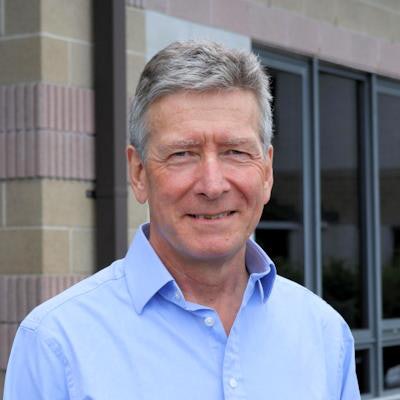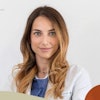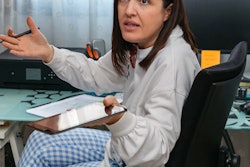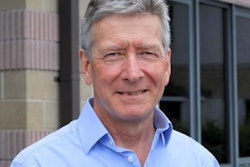
Imaging services in England need an urgent overhaul, including the patient experience, data harmonization, and the development of portals for timely data tracking, Dr. Giles Maskell told virtual attendees at the UK Imaging & Oncology Congress (UKIO) session on service optimization.
Presenting highlights and conclusions from the National GIRFT (Getting It Right First Time) Imaging report, Maskell noted that waiting areas presented a particular problem, as did differences in exam coding across hospitals. He is GIRFT's clinical adviser for National Health Service (NHS) England and NHS Improvement.
The findings and recommendations in the 50-page report published in November 2020 were compiled from 143 pre-pandemic visits made over 18 months to nearly every organisation delivering radiology services in England.
"We saw so many terrible waiting areas where seriously ill, bleeding people were parked on trolleys next to outpatients, and with no facilities for children," noted Maskell, who is a consultant radiologist at Royal Cornwall Hospitals National Health Service (NHS) Trust, Truro, and a former president of the U.K. Royal College of Radiologists.
 The green markers show imaging sites in England visited by the GIRFT team before the pandemic. Most of the yellow markers are now green. Image courtesy of Dr. Giles Maskell and GIRFT.
The green markers show imaging sites in England visited by the GIRFT team before the pandemic. Most of the yellow markers are now green. Image courtesy of Dr. Giles Maskell and GIRFT.Urgent changes are needed to the booking process, access to the service, and waiting environment, he said. Because radiology services traditionally have been situated in the middle of the hospital, the only room available for expansion often is the waiting area, with the result that imaging waiting areas in many city-center hospitals have been severely compressed. One GIRFT proposal is for a division in workstreams between in-patients and outpatients.
Clinicians have known for some time that there are advantages to a hot and cold split for services for the ill and healthy patient, according to Maskell, and he hopes that this separation will come from community diagnostics. He also advocates the use of patient portals, a recommendation that was not included in the GIRFT report.
"It is ludicrous that I can track my parcel from Amazon and see where it's got to, but I can't track my imaging investigation. I can't tell whether it's been organized, whether it's happened, whether it's waiting to be reported, whether there is a result somewhere and I just haven't heard about it... so patient portals I see as a big part of our interface in the future," he said.
Overhaul of imaging data also remains an urgent requirement, he continued. Current data are inconsistent and not "owned" by clinical teams, making comparisons between departments impossible. Maskell pointed to a snap survey of around 12 radiology departments to determine codes allocated to a low-dose CT scan for suspected renal colic. No fewer than six different codes were in use by different departments to describe the same examination.
"Imaging data is a mess. Coding is a big problem for us and it makes comparison of services extremely difficult," he said. "Furthermore, the data submitted to national repositories are not owned by the clinical team. No one knows who submits it, it just disappears out of the IT department somehow. And this is the data on which decisions about radiology services are being made."
Staff shortages
To date, the workforce is the biggest problem preventing the delivery of optimal services, and the risk is that some trauma and emergency imaging will be delayed due to other urgent exams such as stroke, according to Maskell. Different solutions are being explored in different places, including incentives such as golden welcomes and bonus payments for introducing imaging staff to a department, but such approaches simply lead to moving people around rather than creating extra staff numbers, he explained.
He pointed to other strategies such as the creative use of imaging assistants for tasks such as cannulation, and the opening of different routes into radiography such as apprenticeships, as are underway in south-west England. In addition, radiographer reporting can help make best use of staff.
While he is not a fan of international recruitment, Maskell recognizes it as a short-term solution if departments can turn a blind eye to the damage it does to the home countries in question. He also noted that home reporting has been advantageous particularly during the pandemic.
"No one has got it all right and no one has got it all wrong," he pointed out. "I've been to the most challenged departments where they have enormous numbers of staff vacancies, out-of-date equipment, and a poor environment, and you can still find examples of fantastic practice."
Imaging networks will provide the best vehicle for achieving GIRFT objectives such as reducing unwarranted variation, sharing good practice, and harmonizing data and protocols. Harmonization across several organizations in a network for example is a realistic prospect, and it should be considered a good first step ahead of national harmonization.
The GIRFT program has funding for another three years to implement its goals. "Now is our time. There is greater focus than ever before on imaging and other diagnostic services. We must not blow it. We must seize the opportunity," he said.
UKIO's live discussion
In the live online discussion during the UKIO session held on 9 June, Charlotte Beardmore, president of the European Federation of Radiographer Societies, praised Maskell for his comment about imaging capacity resources.
"It is important that new priorities do not destabilise existing care and priorities within imaging -- how can planning be improved when there is competing pressure for imaging?" she said. "I think radiologist numbers are increasing, and we need to ensure there are more NHS posts are available for radiographers; more can and are being trained -- we now need additional NHS posts."
Dr. Adrian Thomas, history columnist on AuntMinnieEurpe.com, noted that Maskell gave a "good talk, however wasn't what you are talking about being discussed 20+ years ago? Why don't things seem to be changing?"
Stroke imaging
Session attendees also heard National Clinical Director for Stroke, Dr. Deborah Lowe, present an overview of the National Optimal Stroke Imaging Pathway (NOSIP). But just how aspirational is this three-year program for improved stroke imaging services?
 Dr. Deborah Lowe. Photo courtesy of GIRFT.
Dr. Deborah Lowe. Photo courtesy of GIRFT.Responding to this question put to her in the Q&A section by session chair Dr. Sam Hare (national specialty adviser -- imaging, NHS England and NHS Improvement), Lowe said the answer wasn't clear cut because elements of the pathway such as rapid MRI access for stroke patients are at present still aspirational, but rapid access to CT and CTA is deliverable in the short- to mid-term.
"The idea that in 2021 patients don't get access to the right evidence-based imaging, isn't great. This isn't all centers, but there is some unwarranted variation and this is something we need to look into," said Lowe, who is a consultant stroke physician and geriatrician at Wirral University Teaching Hospital NHS Foundation Trust.
She described how capacity is different across NHS trusts. Some hospitals get access to first-line MRI for stroke when they need it, while others don't. Understanding some of the capacity challenges is important, and the program is keen to work with diagnostic networks to get some granularity of detail about individual regional challenges. Artificial intelligence access is also an achievable element in light of central funding, she added.
 Dr. David Hargroves. Photo courtesy of GIRFT.
Dr. David Hargroves. Photo courtesy of GIRFT.Dr. David Hargroves, national GIRFT lead for stroke, NHS England and NHS Improvement, echoed these sentiments, pointing out that efforts were being made for a paradigm shift for stroke patients so they could have rapid access to appropriate exams. Implementation of the pathway was achievable, and that once in place there wouldn't be that many more scans -- just scans undertaken at the right time, he added.
"These scans are vitally important if we're going to make the right diagnosis and transform someone's life. I don't think there are many conditions where... minutes have such an impact on the chance of someone returning to any level of normality. This is one pathway where we can really make a difference."
Every five minutes, somebody in England has a stroke, which amounts to about 300 individuals a day. Rapid access to appropriate modalities saves brain function, yet under 43% of patients admitted for stroke don't receive cerebral imaging within the hour, Hargroves said.



















